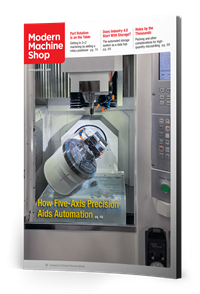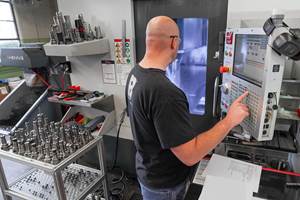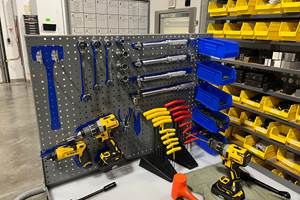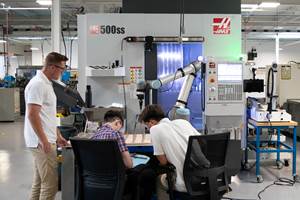Share
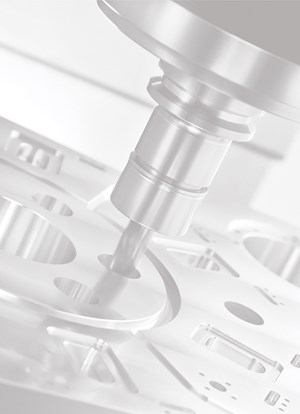





As automation technology advances, it’s becoming increasingly more flexible. Autonomous mobile robots (AMRs) are a prime example of adaptable automation. Not only do they provide an agnostic base that can handle multiple parts and tasks without needing reprogramming or tooling changes, but they can also easily respond to changes that occur in a facility. “Traditionally, factories are used to having conveyor systems to move things around, but that's very rigid and not very flexible,” says Ed Volcic, chief technology officer at KUKA Robotics North America. “So, if you need to make changes to your processes, it's very complicated. But with AMRs, they're going to adapt to your facility.”
As with any new technology, prospective users should prepare by educating themselves and making necessary changes in their business to ensure the implementation is successful.

AMRs, such as the ones in this demo at KUKA’s Automation Tech Days, are a flexible form of automation that is well-suited to material handling tasks in manufacturing facilities. All photos provided by MMS.
Finding a Task
The first step in implementing any new technology is finding a task for it. According to Volcic, the primary function for AMRs in a manufacturing facility is material handling. “I'm always amazed when I walk through a factory and see the amount of material that's moving around the plant,” he says. When raw material arrives at a manufacturer, it’s unloaded and often moved to storage until it’s needed. Then it moves to the shop floor, where it might go through multiple processes on different machines before it’s packaged and shipped out. He suggests that, in addition to providing a more flexible option for material handling than conveyors, AMRs are a safer option than other methods such as forklifts. “People are always moving in a rush, so you have a lot of injuries that can happen with forklifts,” he says. “AMRs have safety systems built into them, so if they detect obstacles in their way, like people moving in front of them, they'll stop safely and then proceed once it clears.” AMRs could also be used for tasks such as delivering tools to machines, moving away scrap or moving a robot between machines.

KUKA offers its KMP AMR platforms in 600-, 1,500- and 3,000-kilogram payload capacities. Two KMP3000 AMRs working together can handle a 6,000-kilogram payload, and the KMP3000P has omnidirectional capabilities for additional flexibility.
Choosing an AMR
With a task identified, manufacturers can select the best AMR model for that task. KUKA offers its KMP AMR platforms in 600-, 1,500- and 3,000-kilogram payload capacities. Furthermore, two 3,000-kilogram AMRs can link up and work in tandem mode to handle a 6,000-kilogram payload. “It really opens up kind of the sphere of things that we can move in a plant,” Volcic notes. Additionally, the KMP3000P has omnidirectional capabilities. “It can move or crab in any direction, which gives it a lot of flexibility as well,” he adds.
Material-handling AMRs are very flexible and can operate in many ways. For example, they can “tunnel” underneath the container that’s being moved and use an integrated lift system (such as the one that’s standard on all KUKA AMRs) to pick up the container and move it to the next location. The AMR platform can also be equipped with a conveyor that links up with other conveyors on the shop floor, and, using the power from its own battery, move items from the end of one conveyor to the conveyor on top of the AMR. It can then transport these items to their next location and load them onto another conveyor. Volcic says an integrator can evaluate a potential user’s application and requirements to design an AMR top module solution that is best suited to their specific needs.
Be Prepared
Prospective AMR users also might need to take a few small steps to ensure their facilities are ready for AMRs. Ron Bergamin, KUKA’s key technology manager for machine tool automation, says shops first need to ensure that the pallets, bins or other material containers are compatible with the chosen AMR base. These are usually easy, inexpensive changes that an integrator can facilitate. Volcic also encourages shops to identify aisleways for AMRs to drive through, though KUKA’s AMRs need comparatively little space to maneuver. “One of the big design decisions we made was to create low-profile, very compact, autonomous mobile robots,” Volcic explains. The compact configuration can navigate more spaces to improve flexibility, and it can essentially execute a 360-degree turn on the spot. “It takes a minimal amount of area to move around and to be able to adjust its orientation and move in different directions,” Volcic adds. While not required, he does suggest segregating forklift traffic from AMR traffic for safety and smoother operation. Finally, the shop needs to ensure its WiFi signal is strong enough across the entire plant for the AMRs to operate.

Fleet management software, such as KUKA.AMR Fleet, facilitates AMR “missions” and tracks AMR status to prevent conflicts.
Programming and Management
AMRs are controlled by fleet management software. This software coordinates and monitors the activities of AMRs, ensuring they operate seamlessly and without conflicts. This includes tracking the location, status, battery level and mission status of each robot. Volcic says that KUKA’s fleet management software, KUKA.AMR Fleet, is designed to be easy to use. It walks users through the process of mapping out their factory with LiDAR, establishing where the AMR will travel, setting up the charging stations and defining the location of products that need to be moved. Then users can create workflows in a no-code environment. “One of the big advantages is that you don't have to be a programmer to implement it,” Bergamin says. Users will see the most benefits from integrating the fleet management software into their existing production systems, according to Volcic. “You want to connect up to the MES or the warehouse management system,” he notes, “because that's ultimately what's going to be driving the tasks and the missions that the AMR is going to be executing.”
The ease of use is also a point of flexibility. “Small- to medium-sized enterprises don't have a lot of staff that can be dedicated to high-end programming, taking weeks to integrate something and deploy it,” Volcic says. “So having any simple system that's easy to deploy is really important for factories in general.”
Related Content
Medical Shop Performs Lights-Out Production in Five-Axes
Moving to five-axis machining enabled this shop to dramatically reduce setup time and increase lights-out capacity, but success relied on the right combination of workholding and automation.
Read MoreUsing Automation to Reduce COGS and Stay Globally Competitive
Decade-long, multiphase automation investments lower operating costs and maintain technology lead in an increasingly competitive global market.
Read MoreTranslating a Prototyping Mindset to Production
The experimental mindset that benefited BDE Manufacturing Technologies as a prototype job shop has given it an adaptable edge as a production facility.
Read MoreCNC Machine Shop Honored for Automation, Machine Monitoring
From cobots to machine monitoring, this Top Shop honoree shows that machining technology is about more than the machine tool.
Read MoreRead Next
KUKA Automation Tech Day Highlights the Power of Integrated Automation Technologies
A demonstration of an automated machining cell showed the power of combining vision systems, robots and AMRs.
Read MoreThe Four Phases of a Manufacturer’s Automation Evolution
With more and more automation options available for manufacturers, how do shops figure out what works best? Medical manufacturer rms Company has acquired robot arms, AGVs, pallet changers and software, and while it has found success with all, it has learned how some solutions meet its particular needs better than others.
Read MoreTest Bed Builds Up Robotics Research at Carnegie Mellon University
At Carnegie Mellon University’s Manufacturing Futures Institute, researchers use a robotic test bed where AMRs deliver Lego bricks to robot arms for assembly to study AI, multirobot collaboration, assembly, safety and more.
Read More












